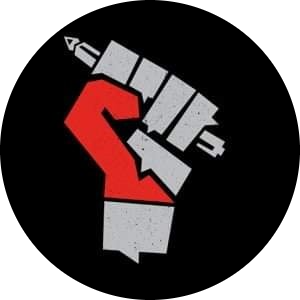Balochistan marks the geographical habitat of a nation filled with pure revolutionary blood, love and rich culture. Marked with immeasurable bloodbath throughout much of its history, the question arises; at what point did this purgatory begin?
Stretching till Iran to the West and Afghanistan to the North, it was an independent country before the British attacked and annexed it in 1839. Then it was British who arbitrarily sliced Balochistan into three pieces – Northern Balochistan, Western Balochistan, and Eastern Balochistan through two artificial borders-the Goldsmith Line (1871) and the Durand Line (1895). Northern Balochistan and Western Balochistan were given to Iran and Afghanistan respectively, while Eastern Balochistan, now a part of Pakistan, remained independent and maintained treaty relations with the British.
After the success of the indigenous people of Hindustan in successfully breaking the shackles of British Raj; all princely states were given the choice of joining either of the two states or staying independent. The central authority of Balochistan along with its masses demanded the nation’s sovereign independence as a state. Balochistan was forcefully annexed by the establishment of Pakistan while Nepal, riding on the same boat, succeeded in becoming an independent state.

An eternity of misery had begun for the people of Balochistan. When military dictatorship was at its peak in the 1950s, some Balochi tribesmen, headed by Nawab Nauroze Khan, took up arms in resistance to the one unit policy. They were met with stiff persecution by the establishment and the leader died in captivity while the guerillas barely made it out alive.
In the following years; series of insurgencies began in the country which were to be known as the ‘Baloch separatist movements’. The Balochi people rose up to what they thought was injustice by the state, the rebellion movements in the 1950-60 were with reference to the 1956 constitution with limited provincial autonomy by an exponential degree. This led to a huge conflict between the two parties in which both the state and the Balochi rebellions suffered heavy losses. Thus, a ceasefire was agreed to in 1969.
The coming years were to be harder for the establishment. After losing one of its wings to political inefficiency, injustice and rebellions; the establishment decided to tighten its grip on her provinces and not to let any ‘rebellions’ pass by lightly. Consequently, after the then prime minister Bhutto felt that the Balochis were conspiring another ‘mutiny’ to escape Pakistan’s shadow; Bhutto ordered dissolution of the province’s assembly. Bhutto ordered the ‘butcher of Bengal’, General Tikka Khan, to begin a military operation on Balochistan. As a result, thousands of Balochis died at the hands of the Pakistani Army led by General Tikka Khan.

Khair Bux Marri, the leader of the Balochi Marri tribe said “Bhutto was no different from Hitler.” When Zulfikar Ali Bhutto wanted to stop the massacre, it was too late. The military had once again strengthened itself after its failure in Bengal. Civilian rule was once again a useless puppet in the government show.
Balochistan continues to suffer at the hands of Pakistani establishment. Sometimes in the name of CPEC and sometimes in the name of another ‘development programme’, The Balochi people have been deprived of their basic human rights to education, clean drinking water and a rule of law with justice. This tyranny may not end until the people of Pakistan stand up together in solidarity with the indigenous people of Balochistan.
The writer is a leftist student political activist working in Sindh.




